Photo
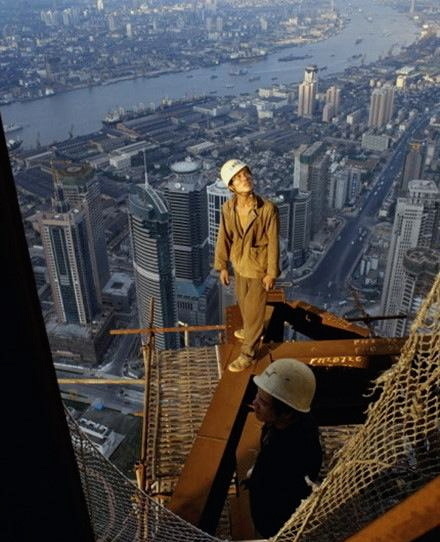
A migrant worker talking with an architect (the one who took the photo):
Years back, they both entered the gaokao test, that (in)famous competition aiming at higher education. The worker, from back water province Hunan, failed with a score of 515 points, whereas the architect, originally from Beijing, was admitted to the technical university with a score of 497 points.
Two destinies!
See also here
56 notes
·
View notes
Photo
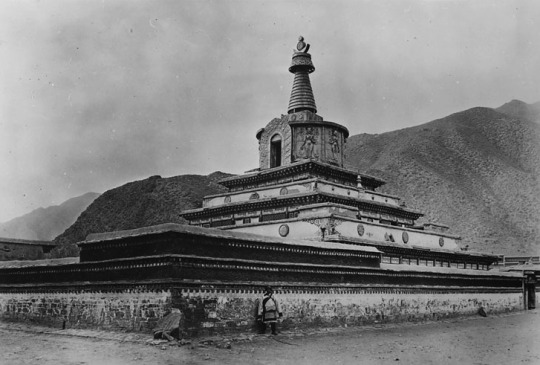
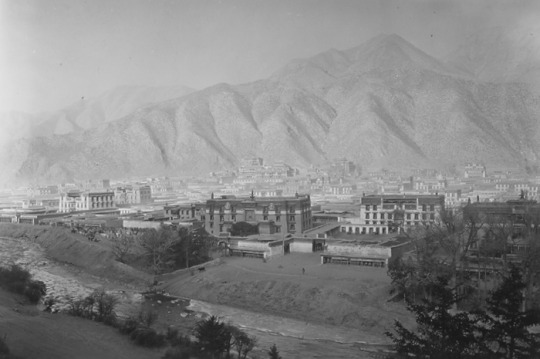

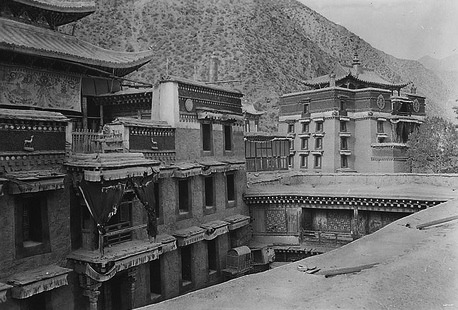
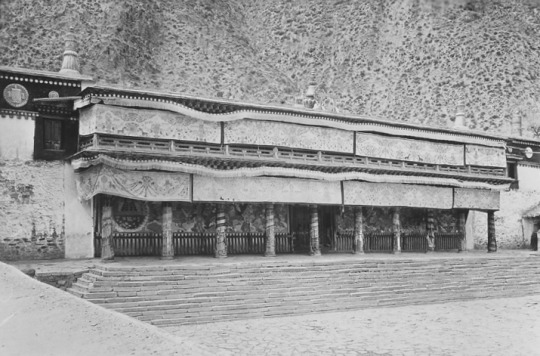
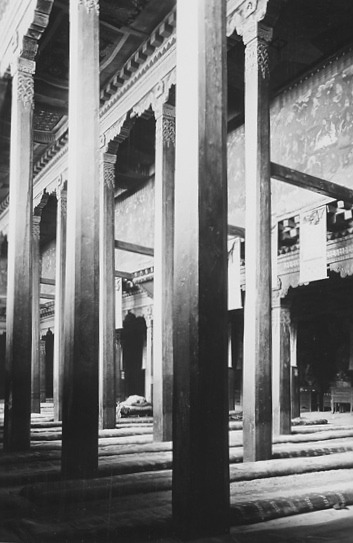

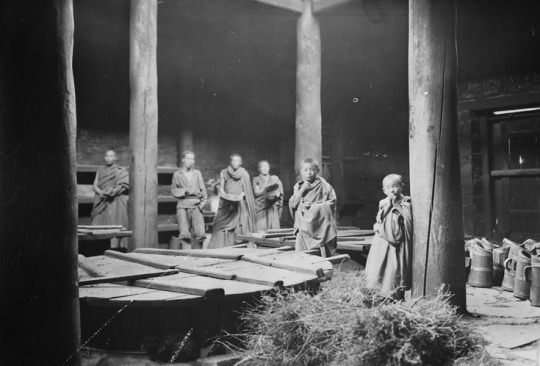
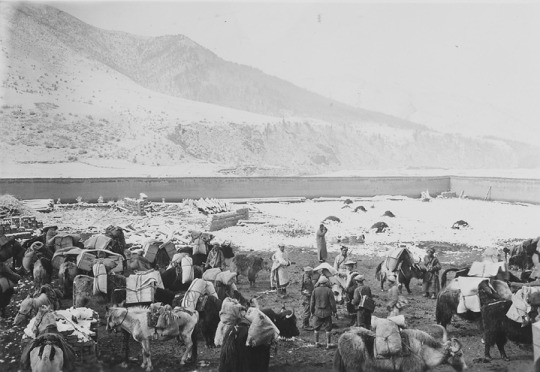
Joseph F. Rock: Labrang Lamasery, 1926
Labrang Lamasery (拉卜楞寺) is one of the six great monasteries of the Geluk (Yellow Hat) school of Tibetan Buddhism. It is located in Xiahe County in Gansu province, at the strategic intersection of four major Asian cultures - Tibetan, Mongolian, Han Chinese, and Chinese Muslim - and was one of the largest Buddhist monastic universities housing thousands of monks by the time Joseph Rock visited it on his exploration to the eastern Tibet areas in 1925-26.
The monastery was founded in 1709 by the first Jamyang Zhaypa, Ngawang Tsondru. The monastic complex dominates the northern part of Xiahe (夏河) with its white walls and golden roofs featuring a blend of Tibetan and Han architectural styles. The monastery contains 18 halls, six institutes of learning, a golden stupa, a sutra debate area, and houses nearly 60,000 sutras. Labrang is Tibetan Buddhism's most important monastery town outside of the Tibetan Autonomous Region and still holds more than 1000 monks.
1. The Gungthang stupa
2. The lamasery overlooking the Daxia River
3. & 4. Jo Khang or Lord's House and private apartments for living Buddhas
5. The Great Sutra Hall
6. Inside the Hall, each (red) column is 14 meters high
7. A living Buddha
8. Lamas standing next to massive wooden kettles (center) and tea buckets (right) in the kitchen
9. Yak caravan preparing for a trip to a neighbouring monastery
Most of Joseph F. Rock's images can be found here
637 notes
·
View notes
Photo
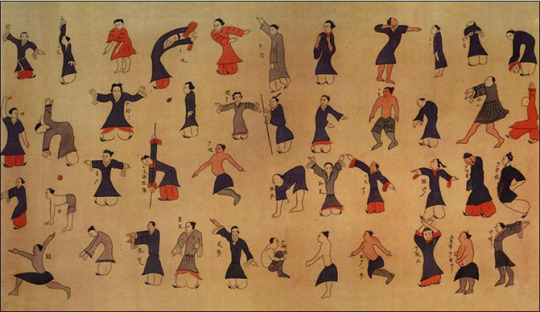
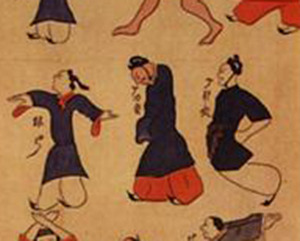
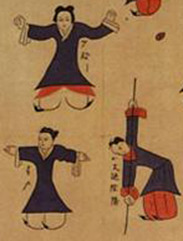
The Guiding and Pulling Chart, Changsha Kingdom, ca. 160 BCE
The chart is painted on wilk and was excavated from the Western Han Mawangdui (馬王堆) archeological site in Hunan province in 1973. It shows forty-four people - men and women, young and old - engaged in a kind of gymnastics believed to heal some diseases and extend life. These gymnastics are considered to be the ancestor of the exercises called qigong (气功) practiced today in China and all over the world.
“Guiding and pulling” (Daoyin 導引) refers to the different postures involved in these exercises. The physical basis for daoyin is qí (气). In the last centuries before the beginning of the Common Era, the Chinese came to believe that the whole world and everything in it was made of qí. Qí was the basis of Chinese medicine and wellness the result of qí circulating freely throughout the body. Exercises could help qí circulate properly.
More here and here
#Daoyin#導引#qígong#气功#qí#气#Chinese medicine#Chinese wellness#Mawangdui#馬王堆#Changsha#Hunan#gymnastics#health#Western Han Dynasty#exercise
21 notes
·
View notes
Photo
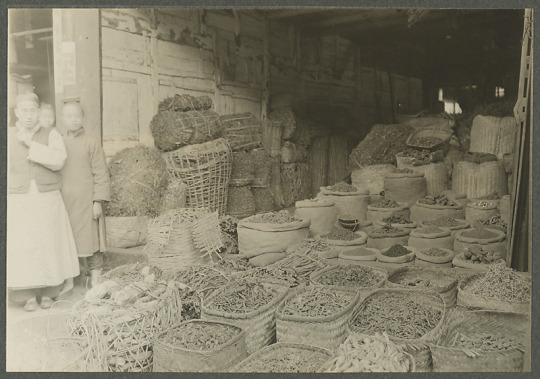
Joseph F. Rock: Interior of Medicine Shop in Chong-pa (Zhongba), Sichuan, 1926
9 notes
·
View notes
Photo
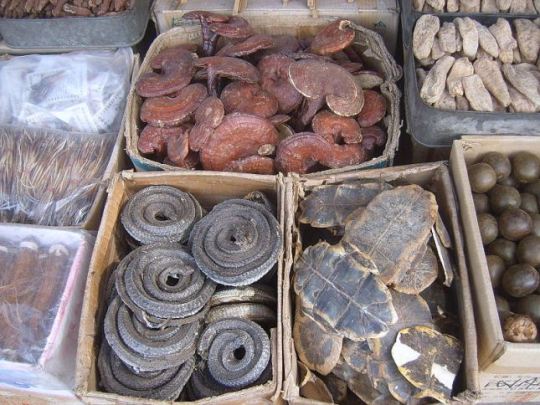
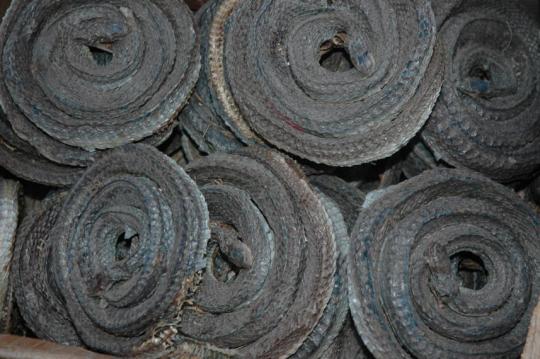
Dried snakes and turtle plastrons seen at a market for traditional medicine in Xi’an, 2011
Sometimes it seems like just about anything can be used in Chinese medicine. Dried snakes and turtle plastrons are sold alongside mushrooms, ginseng, and buddha fruits. Other, stranger, ingredients are also used, such as rhinoceros horn, powdered scorpions, or fossilized bones. To a western mind it can seem more like ancient alchemy than medicine and many of the core doctrines are seen as false or foolhardy by science.
#TCM#Traditional Chinese Medicine#dried snakes#snakes#dried turtle plastrons#turtle plastrons#Xi'an#China
23 notes
·
View notes
Photo
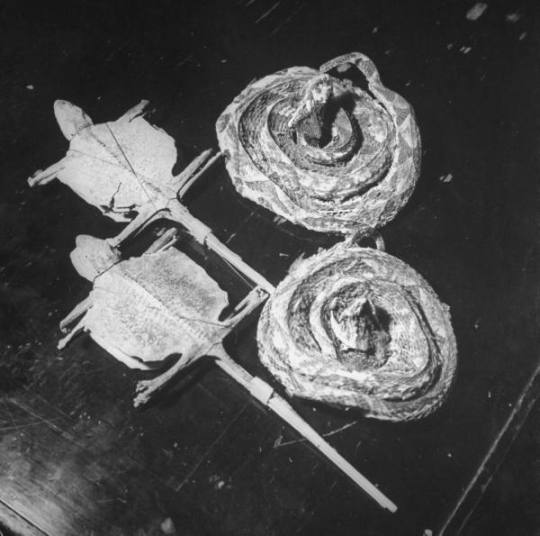
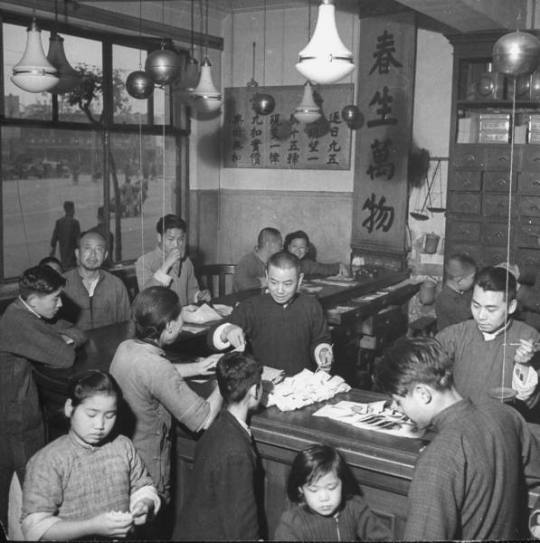
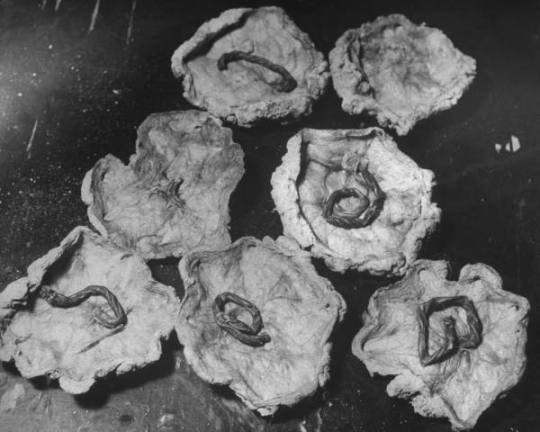

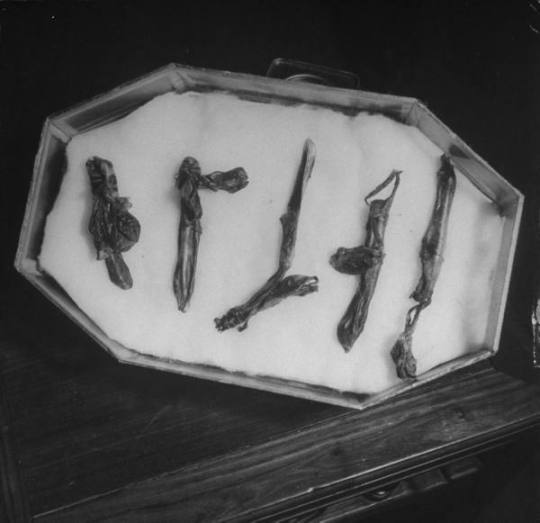
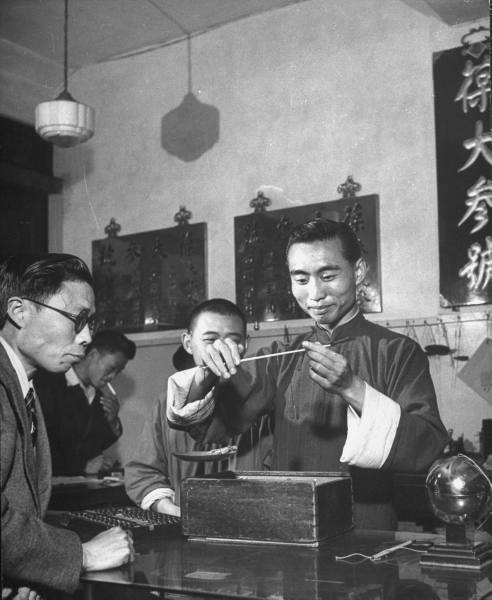

George Silk: Shanghai Pharmacies, 1946
1. Dry lizard and rattle snake powder used for medical cures
2. Shopping in Shanghais largest pharmacy
3. Dried umbilical cords, supposedly good for general health and fertility
4. Kai Kou-Shao sitting in his pharmacy with some of the stuffed animals he keeps around and also a live duck, all of which have some sort of curative significance
5. Seals kidneys used for medical purposes
6. A clerk at the Pao Dah pharmacy weighing a seal kidney for a customer
7. Horns of a very young stag and a stag foetus, used for Chinese cures; the horns of the stag are made into medication containing hormones and the foetus is symbol of fertility
#TCM#Traditional Chinese medicine#George Silk#pharmacy#animals in medicine#dried animals#China#Shanghai#Pre-revolution China
35 notes
·
View notes
Photo


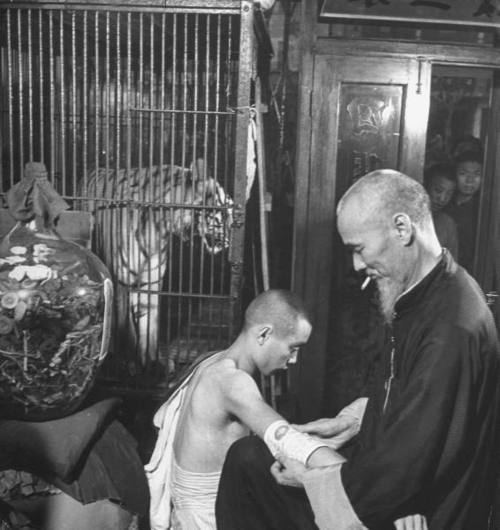
George Silk: Tiger Bones series, Shanghai, 1946
1. Dr. Chen Chu, a tiger bone doctor, standing in his pharmacy
2. Dr. Chen Chu feeding a caged tiger a strip of meat
3. Dr. Chen Chu bandaging an arm after applying some tiger bone balm
#TCM#Traditional Chinese Medicine#George Silk#Pre-revolution China#animals in medicine#tiger bone balsam#Dr. Chen Chu#Chinese tiger#endangered animals#China#Shanghai
6 notes
·
View notes
Photo

George Silk: Street vendor with tiger bones for those who wish to make their own medicine, Shanghai, 1946
#George Silk#Pre-revolution China#TCM#Traditional Chinese Medicine#tiger bone balsam#street vendor#animals in medicine#China#Shanghai#Chinese tiger
39 notes
·
View notes
Photo

James Whitlow Delano: Young Tibetan man holds tiger paw for sale in Qingping Market, Guangzhou, 2009.
The region’s increase in wealth has driven up demands for illegal tiger parts, which are used in traditional Chinese medicine. The World Wildlife Fund estimates that globally, there could be as few as 3,200 tigers left in the wild. On the day this photo was taken, more than 25 tiger paws were laid out for sale on the sidewalk market at midday.
From James Whitlow Delano’s Growth series
#James Whitlow Delano#tiger paw#Chinese tiger#Qingping Market#Guangzhou#photo documentary#WWF#World Wildlife Fund#endangered animal#tiger bone#animals in medicine
1 note
·
View note
Photo
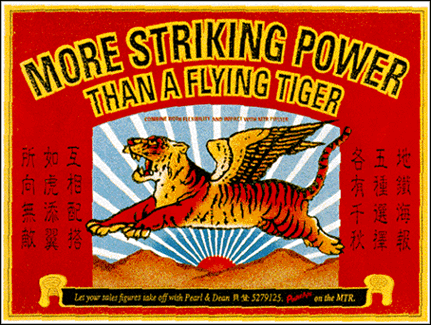
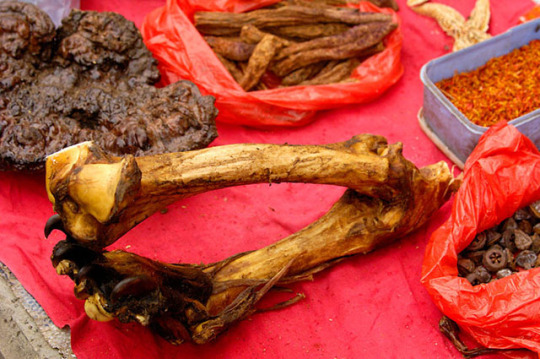
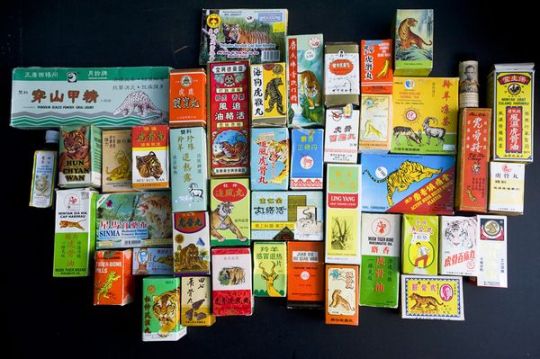
Tigers in Traditional Chinese Medicine
For more than 1000 years the use of tiger parts has been included in the traditional Chinese medicine regimen. Because of the tiger's strength and mythical power, the Chinese culture believes that the tiger has medicinal qualities, which helps treat chronic ailments, cure disease and replenish the body's essential energy.
Traditionally, most tiger parts were considered to have a healing effect on human beings.
Whiskers for tooth ache
Teeth for rabies, asthma, and sores on penis
Eyeballs for epilepsy and malaria
Biles for convulsions in children
Brain to cure laziness and pimples
Blood for strengthening the constitution and will power
Skin to treat mental illness
Fat for vomiting, dog bites, bleeding, and haemmorrhoids
Tail for various skin diseases
Claws for insomnia
Bone for rheumatism, arthritis, general weakness, headaches, stiffness or paralysis primarily in lower back and legs, and dysentery
Despite scientific proof that tend to discount all claims of any curative power in tiger bones, Chinese medicine stores in Hong Kong, China, Taiwan, South Korea, Vietnam and in Chinatowns across Europe and North America, do a steady trade in tiger wines, powder, tiger balms and tiger pills. Many Asian communities believe that tiger bone, in powdered form or prepared as tiger wine, soothes rheumatic pain and cures ulcers, malaria and burns.
Although the use of tiger bones was removed from the traditional Chinese medicine (TCM) pharmacopeia in 1993, when China first introduced a domestic ban on tiger trade, the increase in the standard of living in southeast Asia has made these remedies available to most people.
It is no wonder then that this newly affluent population has had a great effect on wildlife numbers and the demand for tiger parts. In many places in China, tiger parts are a delicacy that is served at special private banquets. The use of endangered tiger products and their medicines is seen as a symbol of high status and wealth. Some remedies list tiger parts as an ingredient, but the real animal parts are so expensive that often the medicines may have only trace elements; but even this is enough to promote the continued slaughter of the tiger.
Further reading:
On Tiger Balm (which contains no tiger parts) here, on recent sales of tiger bone wine on auction, an 15 years old undercover discovery of sales of tiger parts in American Chinatowns and finally a general introduction to the issue.
#TCM#Traditional Chinese Medicine#tiger#Chinese tiger#tiger parts#tiger bones#animals in medicine#endangered animals#WWF#World Wildlife Fund#tiger wine
10 notes
·
View notes
Photo

Wu Hao: Holiday Tiger, 1964
Woodcut (46 x 81 cm) @ the Collection of Taiwan Museum of Fine Arts
While many realistic contemporary painters at the time specialized in classical painting styles for tigers, Wu Hao takes another approach with his tiger that makes you think it is not a man performing tiger, as it should be in the festival occasion, but the tiger itself emerging from the man. Remarkable is also the tail that winds around at the rump like a snake before emerging in a curved loop almost touching as it leaves the solid body of the tiger. The lack of ferocity of this tiger is also emphasized by its cat whiskers and the ba-kua trigrams of which only two are visible on the forehead of the tiger.
21 notes
·
View notes
Photo
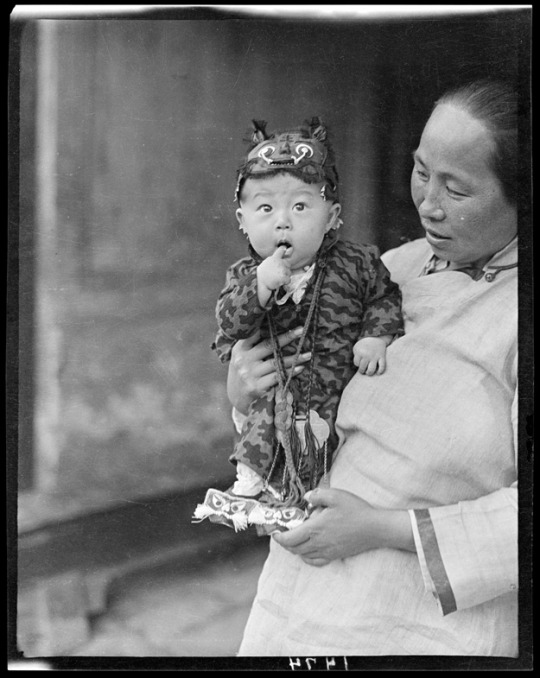
Sidney David Gamble: Child in a Tiger suit, Beijing, 1917
70 notes
·
View notes
Photo

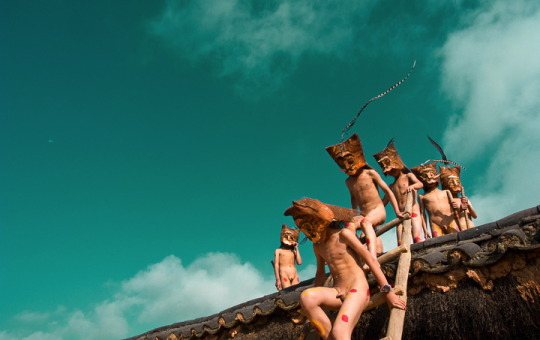
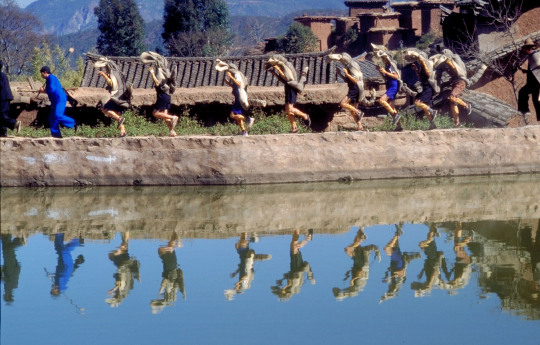
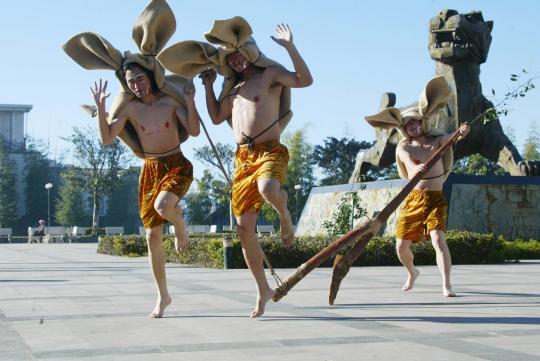


The Tiger Dance of the Yi in Yunnan
It is said that the Yi people from Shuangbai County in Yunnan province once lived in a dense forest disturbed by snakes and wild animals. In order to prevent themselves from being hurt, they thought out a way to guard the village. Under the lead of the black Tiger King, they perform all kinds of dances reflecting the production, living, and procreation of the Yi people and go to each house at the village to help get rid of evils. Thus the Tiger Dance was created ever since, showing their tiger-like strength and valor.
Once a year, a fortnight after the Chinese Spring Festival, Wudi village stages a peculiar festival of its own - Laohuzhuan, or Dressing Up as Tigers - that in no way resembles anything culturally Chinese, unless it be the shamanistic dances of ancient, preliterate Chinese. For this event several young men don strange costumes, paint their bodies and masquerade as tigers (or leopards). They are joined by other men, including the village bimaw, in long black gowns. Together they perform magic dances to invoke the gods' blessings for the coming rice crop.
Top illustration is a collage by Colette Fu, the other photos come from different sources. Jim Goodman has a very good description of the Tiger Dance on his blog.
38 notes
·
View notes
Photo
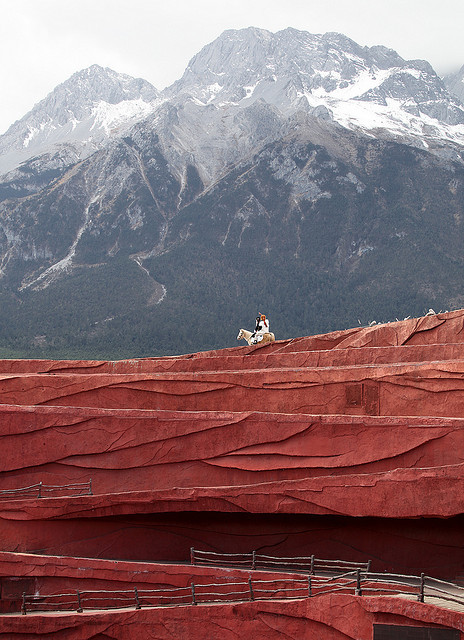
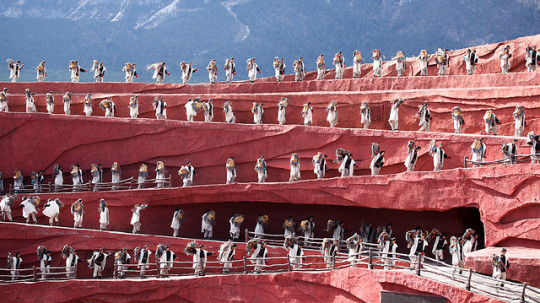
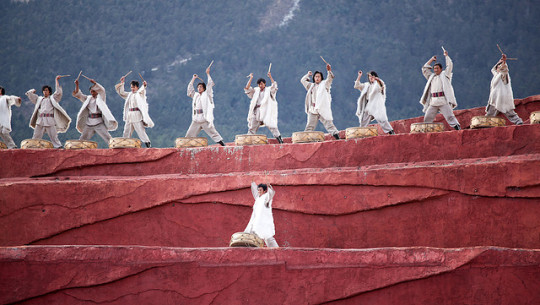
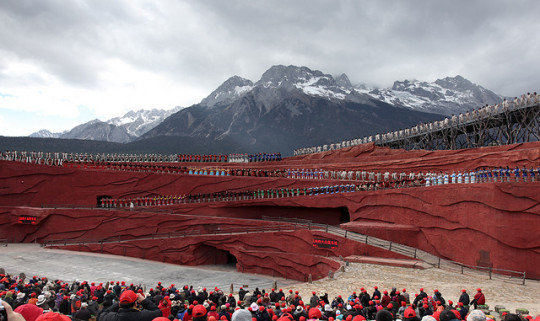
Quang Minh:��Impression Lijiang, 2012
Impression: Lijiang is a large-scale show composed of a series of musical performances that largely portray the life of the Naxi, Yi, and Bai peoples of the western part of Yunnan (雲南). The show takes place inside Jade Dragon Snow Mountain Park near the town of Lijiang (麗江), at an incredible elevation of 3500 metres in an outdoor theater specifically designed to showcase the mountain which is used as a backdrop.
The production itself is designed by Zhang Yimou (director of Raise the Red Lantern, Hero, House of Flying Daggers), Fan Yue and Wang Chaoge, and features a cast of over 500 people, and a more than 100 horses. It runs since 2007.
Westerners might initially be surprised by the matriarchal context of the performances – depicting the women going to work while the men laze around, get drunk and sing songs to make their women proud. It should be considered that both cultures are quite different to most others, even to that of Han Chinese culture. The Yi and Bai are a strictly matriarchal culture while the Naxi (which is officially regarded as a parent culture to both the Yi and Bai) has substantial matriarchal elements. To balance things out there are performances that depict the famous tea trading of Yunnan, which was a dangerous activity for the men of the time as it involved negotiating the infamous and treacherous mountain.
By the way: The view of the massif from the gardens at the Black Dragon Pool (Heilong Tan) in Lijiang is noted as one of China's finest views, and part of Yulong Snow Mountain Scenic Area, a AAAAA-classified scenic area.
More of Quang Minh's photos from Yunnan here.
#Impression: Lijiang#outdoor theatre#Lijiang#麗江#Yunnan#雲南#Jade Dragon Snow Mountain#Zhang Yimou#Fan Yue#Wang Chaoge#Chinese mimorities#Naxi#Yi#Bai
50 notes
·
View notes
Photo
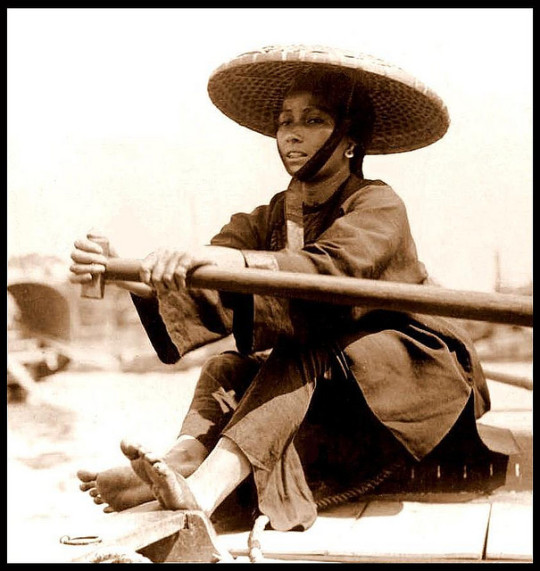

River boat girl on Pearl River, 1902
Photos uploaded from Okinawa Soba’s Flickr
32 notes
·
View notes
Photo
Scenery from Xiapu in Fujian province
via mouxart
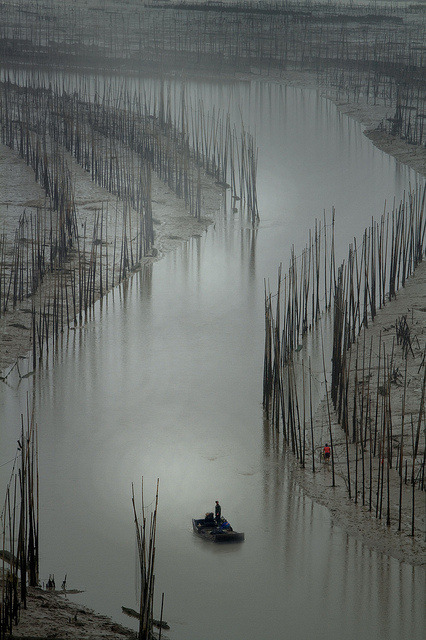
493 notes
·
View notes
Photo
Female tea pickers in Lijiang, Yunnan province (雲南 麗江)
By mawingchung on Flickr, click here for large image
Originally posted by xtam999
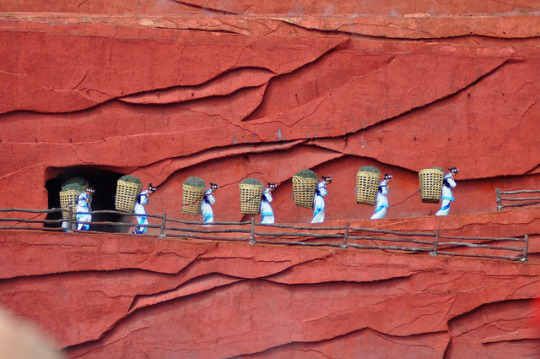
52 notes
·
View notes